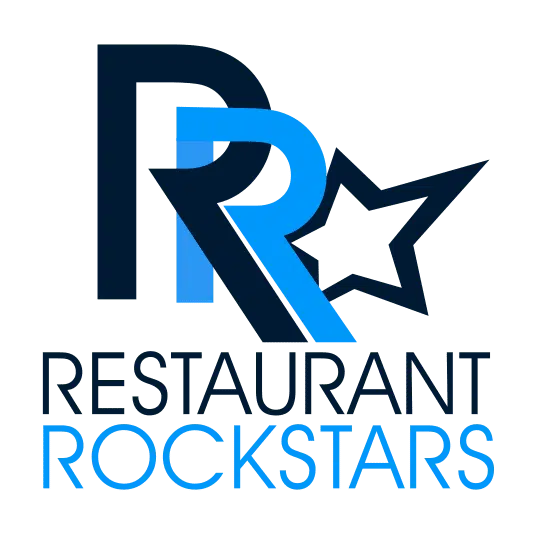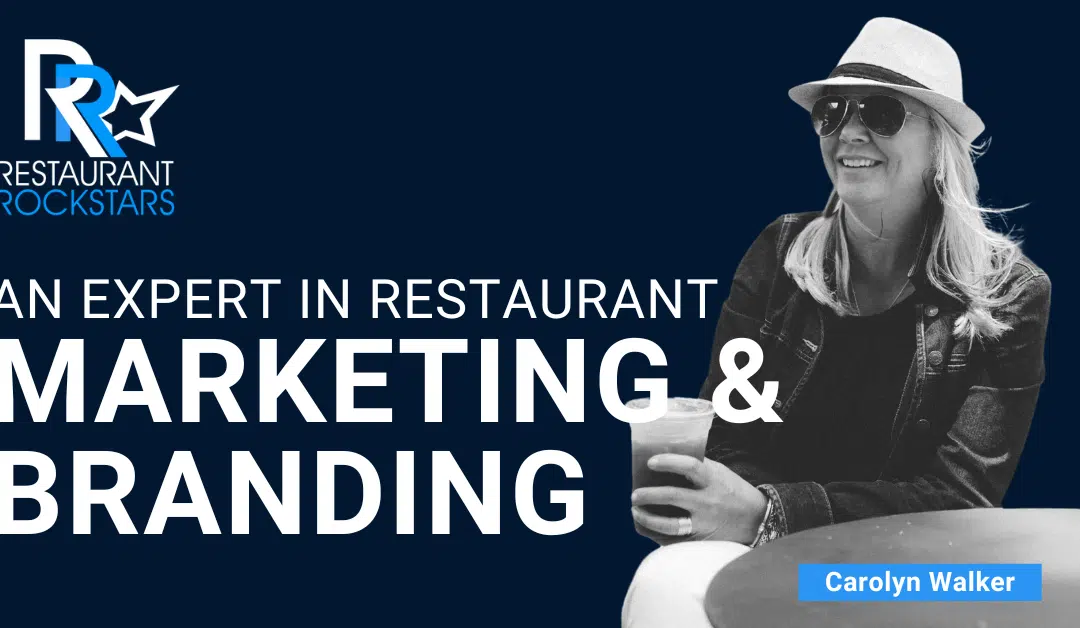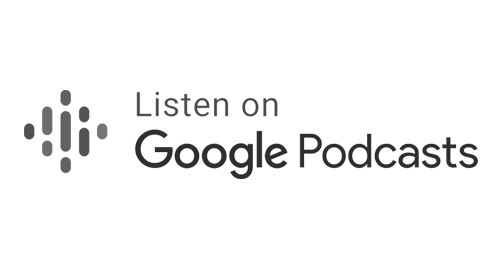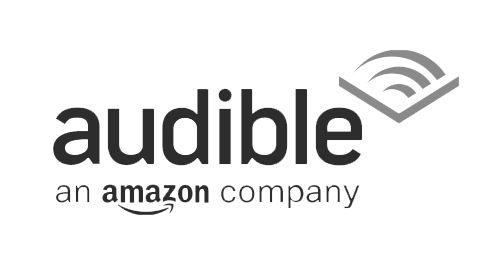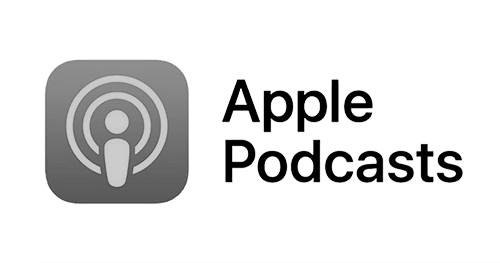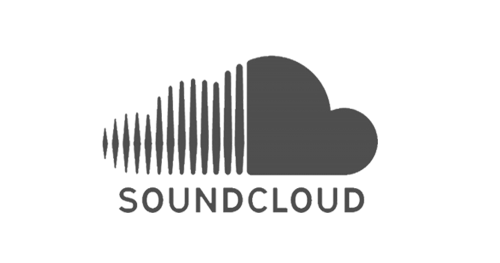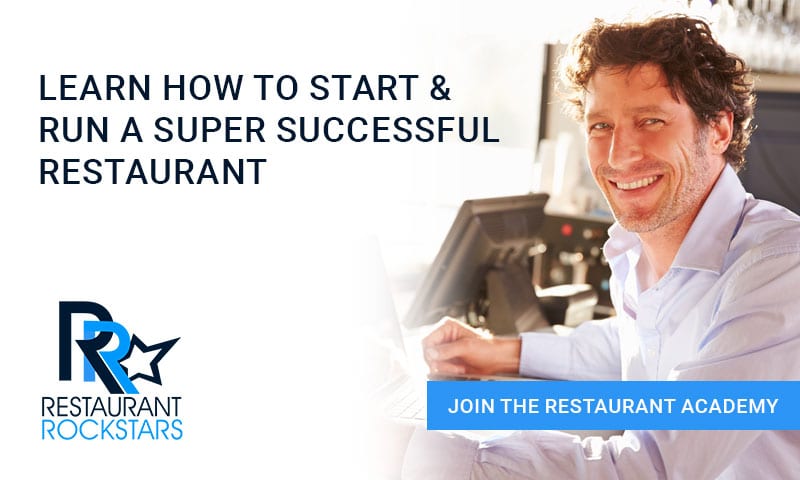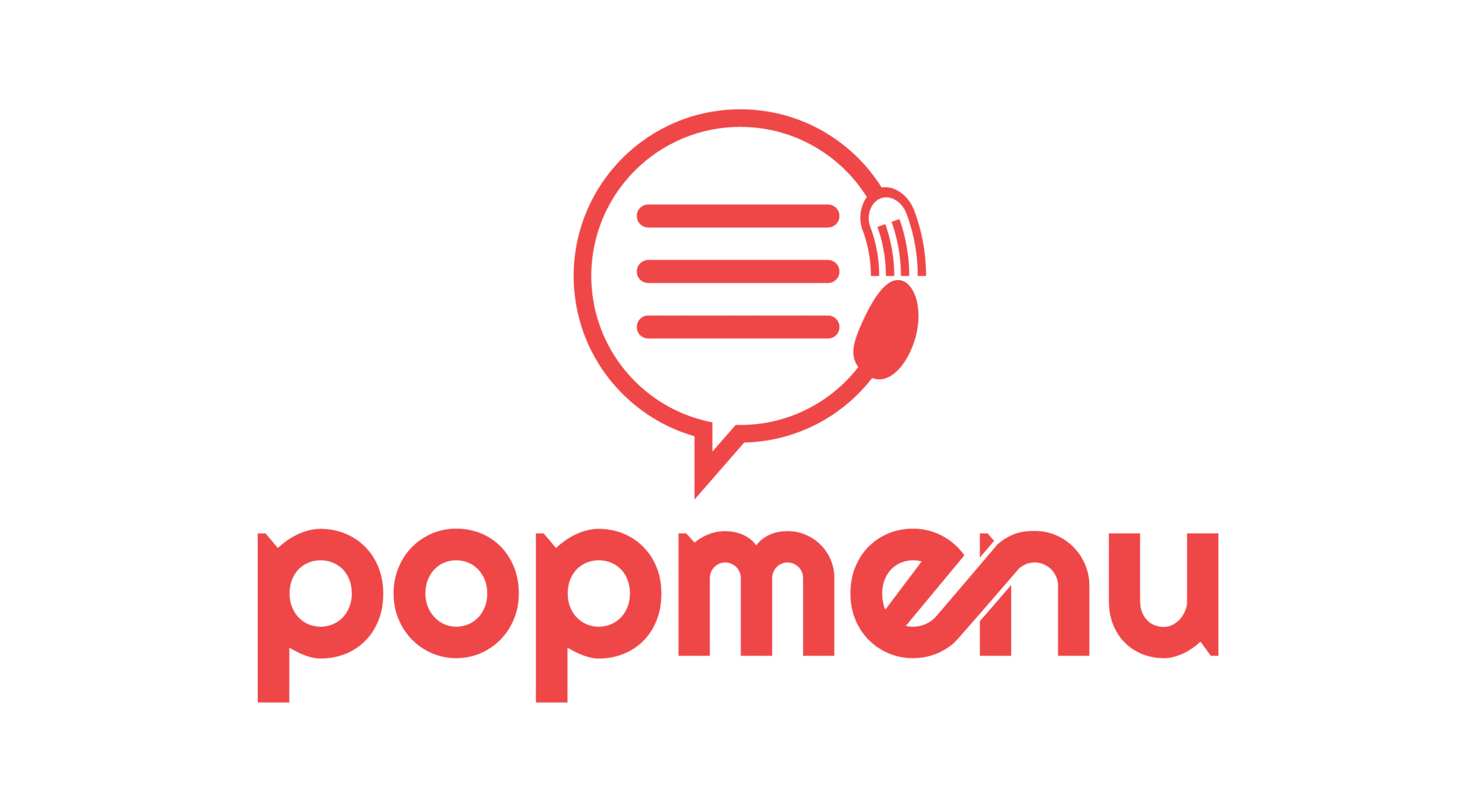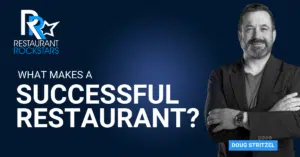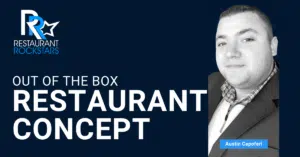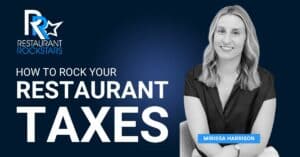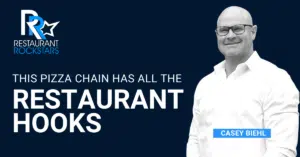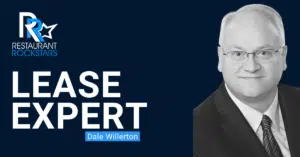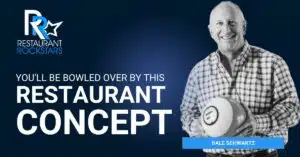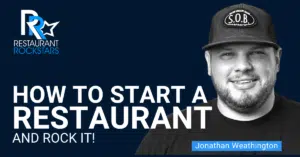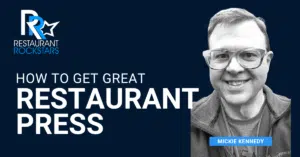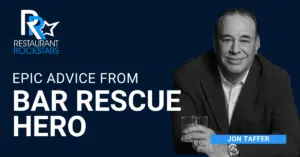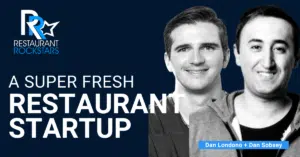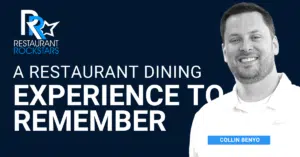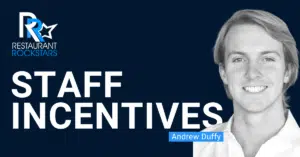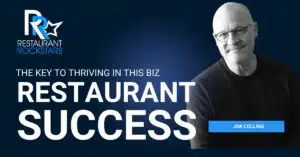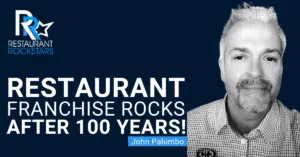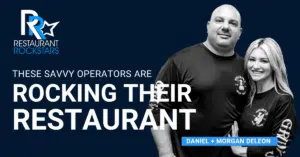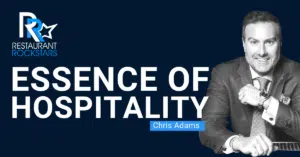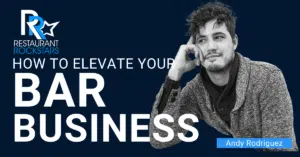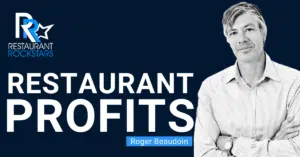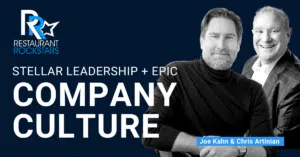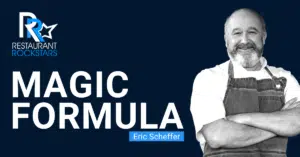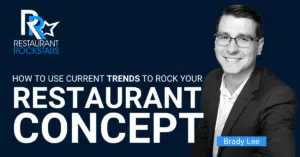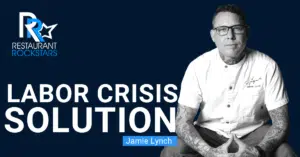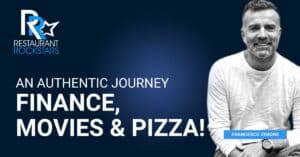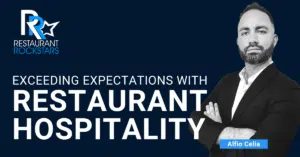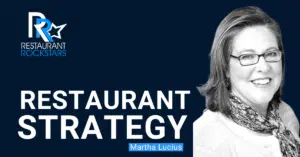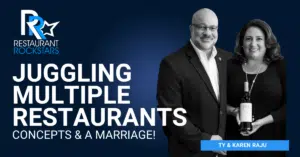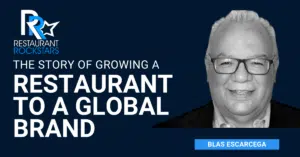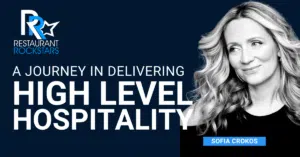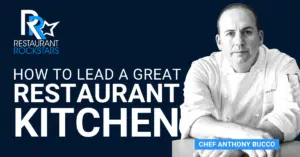Restaurant Rockstars Episode 346
Powerful Restaurant Marketing & Brand Building
LISTEN HERE OR ON YOUR FAVORITE PODCAST PLAYER
Click the video below.
Restaurant Marketing is so important, but few operators are also expert marketers.
What most operators tend to do is experiment by trying this and trying that, hoping for the best. The problem is that most restaurant marketing is not trackable, so you don’t really know if it’s working.
Worry not!
In this episode of the Restaurant Rockstars Podcast I’m speaking with Restaurant Marketing expert Carolyn Walker, the CEO of The Response Agency.
Carolyn has 20 years of experience working for some of the largest restaurant companies, as well as on the brands of billion-dollar corporations.
Listen and learn as Carolyn shares with us:
- How to be a champion of bold ideas
- Key learnings from her experience with Darden Restaurant Group
- Why restaurant marketing is not the “savior” but the “amplifier”
- A crash course in “brand building”
- The difference between “positioning” and a “unique sales proposition”
- What “performance marketing” is all about
- If your operation should start with a strong brand first or use a retail merchandising program to build the brand
- If and when it’s time to “re-brand” a concept
And of course, Carolyn’s key-learnings gleaned from driving the marketing of some of world’s biggest brands.
Watch or listen to this episode and then go out there and Rock YOUR Restaurant!
Roger
Connect with our guest:
Email: carolyn@response.agency
Website: https://response.agency/
LinkedIn: https://www.linkedin.com/in/carolynwalker/
Facebook: https://www.facebook.com/ResponseMarketing
Twitter: https://twitter.com/ResponseMktg
0:00
I mean, your brand needs to permeate every single employee, right? And so they need to understand your why and why are they here? Why are they doing this for you, so that they can be empowered to make good decisions about what kind of experience they’re going to give to your guests. It needs to be a very kind of complete process and a very well thought through process so that you’re doing everything you can to get that customer to have the experience that you want them to have.
0:26
Thanks for joining me back again on the restaurant rockstars podcast, my guest today, Carolyn Walker, champion of bold ideas, a brilliant thinker. We’re talking all about marketing, Carolyn has built a 20 plus year career, working with illustrious multi million dollar brands, and even multibillion dollar top corporations. And now she has a hospitality focus. We’re going to talk all about what she calls performance marketing, we’re going to dig deep, and give you lots of ideas on you know, how to market your business and really set yourself apart from the competition and maybe even touch on some of the mistakes you might be making now. So this is all about restaurant marketing. It’s all about hospitality, you’re gonna want to stay tuned. Thanks to the sponsors of this week’s episode, pop menu verge funding, the birthday club, and the restaurant rockstars Academy. Now on with the episode,
1:19
you’re tuned in to the restaurant rockstars podcast, powerful ideas to rock your restaurant. Here’s your host, Roger Beaudoin.
1:34
Listen, you’ve heard a lot of noise about the ERC tax credit, why is it such a big deal, because your business already paid a ton of money in payroll taxes, and more than likely you qualify to get a ton of money back. Now, if you haven’t applied yet. I’m telling you drop everything, drop what you’re doing and figure out how to get it done. The truth is, and I’m speaking from experience here, it’s super easy to get the money back if you let an expert do the work for you. Now get on this before the government either changes the program or runs out of money. I got hundreds of 1000s of dollars back from my restaurant, and it literally saved our business. Now you may have heard it may take many months after applying to get your money back. But that doesn’t have to be the case. If you need your ERC refund sooner to run your business or to take care of some much needed projects. You can speak with Karen Garbett, the owner of verge funding group about a bridge loan or other working capital. Now whether you wait for your check up for a bridge, loan or other working capital, it’s likely you have a significant amount of money due back to you so don’t lose it. Now go to the show notes for this episode on our website and use Karen’s calendar link to set up a time to chat with her personally about how much money your business can get back. rockstars there are many elements to consider when growing your restaurant. are you connecting with diners enough and with the right message? Could your kitchen be putting out more orders than your dining areas have room for? Well, it can be overwhelming especially when the reason you got into this business is for the food and the people. That’s why restaurants get pop menu. Pop menu is the marketing tech platform designed to make growing your restaurant easy, so you don’t have to grow it alone. With pop menu you can capture more guests and their preferences through your restaurants website that’s designed to easily collect contact information and data so you can see what your guests love and why they dine with you. Connect and build authentic relationships with guests by using modern technology that personalizes marketing. Make all your systems work better together, improve margins and conquer the chaos of your restaurants digital presents pop menu as a special offer for my listeners. For a limited time, get $100 off your first month plus lock in one unchanging monthly rate at pop. menu.com/rockstars go now to get $100 off your first month at pop menu.com/rockstars Hey, everyone, it’s the restaurant rockstars podcast and I’m so glad you’re here. So Carolyn, welcome to the show. I’m so glad that you’re here as well. Thanks for joining me.
4:13
Oh, thanks for having me, Roger, really happy to be here.
4:16
Well, you are a bold thinker and a creative resourceful marketer with extensive experience. And I love marketing episodes, because marketing, as you know, as our audience knows, is a vital part of their business. So I’m sure we’re gonna learn a lot by talking with you. So thanks again, where did hospitality begin for you? And again, take us back as far as you’d like. But obviously you you had an extensive series of experiences really in long term with some very big names in this industry. And I’m going to ask you about that. But where did it all begin?
4:48
Well, I will go back. Far I started. My interest in hospitality started when I was in high school, believe it or not marketing and hospitality at the same time. Good. No mind. Yeah, yeah, they did kind of combine. So my mom ran a, this is a long time ago. Most people are not gonna remember but there used to be research facilities in malls where they would do mall intercepts. Do you remember that? I absolutely
5:13
remember that we had a huge mall in my hometown when I was in high school and growing up and you couldn’t walk through the food court or the main thoroughfares the mall, route these people with the, you know the clipboards, and hey, man, I have a few minutes of your time. And that was like market research. Right? It was
5:30
it was total market research. And my mom ran ran one of those facilities. And she, you know, pulled me in to help her with assignments once in a while, and then I turned 16. And, and I found out that I really actually liked it. And I was one of those people who did mall intercepts, and I brought people back to the facility and we did all kinds of tests with them, like, you know, seriously, like Coke and Pepsi. And, you know, Teddy Grahams, and all these different things. We were asking people what they thought, you know, try things and ask them what they thought. And so I really like that kind of started my interest in marketing. And at the same time, I was 16. And I was working at the like the the core, the key food kiosk in the in the mall, like in the food court area. It was a huge, it was a huge unit. It was called cheesesteak Charlie’s not beefsteak Charlie’s. And we sold Philadelphia cheese steaks. And we also sold frozen yogurt with toppings and frozen yogurt at the time. This was before, you know, I can’t believe it’s not yogurt and all that stuff had come out. And so it was really fascinating to me. You know, I mean, the industry itself, but the marketing of it, because here we are a little food service vendor concept in the mall, and no one really knew what frozen yogurt was. So I put on my kind of marketing and sales hat way back then. And we’re getting people interested in trying this new frozen dessert. And I loved it, I was, you know, helped with sampling, I helped, you know, arrange the display, you know, of the fruit and the toppings and things like that. And so it all did kind of come together for me really young. And I knew that I wanted to study marketing at that age. And I went to Northeastern University in Boston and did just that. And so it really kind of, you know, I got that training and that education and marketing at the same time, because of northeastern being a cooperative education school, I worked full time, as well as going to go into school full time. So I graduated with two years of work experience and my degree. And I immediately went into advertising, which I liked, I was at Saatchi in Manhattan, and that was good. But I really wanted to see more of the marketing picture. And so I replied to this ad and Ad Age, I’m not kidding you. It was like a one by one tiny little ad for a marketing coordinator position at at Darden, which was General Mills at the time. And, and I got the job. And I moved from New York City to Florida to to Orlando, and went to work for Darden and loved, loved loved it. Like I had no idea that the you know, I knew that little bit of what I knew from high school in college and being in food service in restaurants, but I really didn’t know how to big restaurant operation ran. And one of the first things that they did, for me as a as a new team member in the marketing department is they put me in operations, they said, Okay, you need to know how this company operates and how we operate at the store level. And so they sent me to Texas City, Texas for like two and a half weeks. And, and I was there, you know, learning the restaurant. And I thought that was the smartest thing that they could have done to me at that time. Because, you know, as a marketer, and I learned this as I went as a marketer, you really need to know what the implications of what you’re suggesting or doing or recommending are on the operations of the of the restaurant.
9:08
so valuable. You’re absolutely right. I mean, what a great experience one immersion in a restaurant so that you can understand the operation so that you can then yeah, see the big picture of how the guests sees the operation, how to reach that guest consumer behavior. It’s like, wow, we’re touching on all kinds of bases here, but I don’t want to interrupt you keep going.
9:29
Yeah. So So I’ve worked there for about seven years or so it was an amazing experience. You know, Darden, what is now Darden now. It was General Mills restaurants at the time, yes. You know, really was known as and being part of this organization. It was really very much marketing driven. You know, we were advertising constantly through it was most of it was television advertising, but we did all kinds of other stuff, too. You know, we had renting we had, you know, we did couponing we did all kinds of stuff. But, you know, we were on air for, I think it was something like 48 or 50 weeks a year, it was incredible. And so it was really marketing driven. But and being in the center and marketing, like you were working with, you know, the operators, of course, you know, so I did get that training for two and a half weeks. But that didn’t end there. You know, as we tested things, I was going into the markets, talking to guests talking to, you know, doing the jobs in the operations role, right, whether it was an expediter, or server, helping split lobster tails, like I needed to know how all of that was working, and how the promotions that we were running, were impacting the restaurants, and so learned all about that learned about the financial side, by the way, I’ve listened to some of your episodes, and I hear you talking about that a lot. And I’m telling you, they had this down to a science. And so in the marketing role,
10:58
yeah, real little right down to the cost of the wrapper on a soda straw, it is that dialed in, it needs to be because profit margins in this business, as you know, and our audience knows are so thin. And even though giant companies have these economies of scale, they’re still focused on profit, providing great experiences to guests giving value, of course, but they have a much larger opportunity to make the profit because of the economies that the independent operator just doesn’t have actually right now, and it’s like, but the things we can learn from the systems that they have in place are applicable to the single mom and pop location, the small chain, the regional 10, location, restaurant groups, it’s all applicable, but it really does trickle down from the top and brought that up, that’s really vital.
11:46
It does. And as a marketer, like they taught me early on, like, Okay, if the promotion is, you know, for example, like 30, shrimp or whatever, you know, you’re we’re, you’re putting together what that offer is, and you’re costing it all out, you know, depending on the, and we the purchasing department had, you know, had the foresight and the forecast of what was coming out of the water, right, and at what prices and globally, what prices in the, you know, currency exchanges, and they had that all dialed out. And so we had these things that were quarterly standards, pricing standards, you know, cost standards that we used for, okay, if the promotions running six months from now, what’s the price gonna be? Right? And what’s the cost of all the items related to that promotion gonna be? And so they taught me very on that early on to understand like, financially, what was happening, right with what we wanted to offer, so that we were making money on it. And thinking about things like labor too, right? So it’s not just about the food costs. But if you can’t make manage food cost, and you can’t manage labor in a restaurant situation, you’re not making money,
12:58
you’re out of business, like immediately. Yeah, the two biggest expenses, obviously, are food and labor in any restaurant labor being higher now than ever, post pandemic. Now, and that’s the challenge that everyone understands, clearly. But, yeah, I mean, knowing the financials are critically important to making money or losing it on a daily basis. And I could go on all day about that. But I know,
13:21
I know. And I totally agree with you in, in what I’m saying is like, I learned all of that, as you know, in my 20s, working for Darden Restaurants, like I’m a total eye opener, and, and it was just an amazing experience all the way around, you know, I started, like I said, as a marketing coordinator, coordinator, I worked my way up into the promotions manager. And like I said, we were on air 48-50 weeks a year. So we constantly had, I think we ran something like, I don’t know, eight or nine promotions in a year, like it was a lot of promotion. So you know, you’re coming up with ideas, you’re working with the chef’s you’re working with finance, you’re working with purchasing, you know, you’re figuring out you’re working with the people who buy the smallwares for eat, it’s just and the operators of course, too. So it was a fascinating experience. For me, I loved it. I love the creative side of it. I love the business side of it. They were amazing, just an amazing group to work with. And I, I think probably at the time being in my 20s I didn’t really understand the you know, what I was getting from them, what were they what they were teaching me, you know, and maybe undervalued my experience by a little bit but
14:12
it was done. Much different than the General Mills restaurants you talked about because there were certain brands then that perhaps are not even part of the fold today. And how did that whole thing evolved? And then tell us what brands you specifically worked on? Yeah,
14:46
it is it was totally different back then. So when I started it was General Mills restaurants and they had Red Lobster Olive Garden, China Coast remember that? I
14:54
don’t remember China coast. The other two clearly, you know thriving today. But no, I’m not. And
15:01
when I was with them that it was it didn’t last very long was a Chinese concept that they created. Obviously. They created Bahama breeze while I was there, they created seasons 52 While I was there. And so those were some of the brick key brands when I was there as General Mills, and then they spun off of General Mills, because General Mills wanted to get back to their core business, they were feeling like, right, it’s, you know, General Mills isn’t was not a typically a restaurant company. Exactly. That’s exactly right. So they had a very CPG outlook on everything. And I found this out later, too, that General Mills was like, they always wanted us to kind of downplay the bar business, because they’re such a family, you know, cereal company. And so we had some issues with like, you know, bar, you know, bar business and things like that. And so, anyways, they, they spun. And what happened was, we became an independent, you know, a separate company from General Mills. And the name Darden comes from Bill Darden, who was the founder of Red Lobster. So and so the key brands, again, when that spin happened, were Red Lobster, Olive Garden, Bahama breeze, they were starting to develop smokey bones, seasons, 52, those were the brands, and then post my departure. They actually spun Red Lobster off to a separate company as well. So now red lobster is not part of the Darden Restaurants family, which was the brand that I worked on,
16:39
it all started there really from Garden, and then it did there. And then well, you know, change happens all the time, and consolidation and mergers and acquisitions and all this stuff goes on. And companies divest certain brands that are losing money and you know, seeing opportunity, it’s always moving forward. And you’re always trying to figure out, okay, how can we dominate this industry? And how do we build competitive advantages, and you are part of all of that, which is so fascinating. You touched on something that I want to get a little deeper on? Sure. Let’s talk about when you first started, in the marketing department, you had that immersive experience in the restaurants and all that, but it probably took some time before you actually started making big level decisions, right? Where you were in a support role. You were learning marketing in the business, you are a young person. And clearly you were there a long period of time? How long did did you rise? Like a rocket? Did it take longer than you expected? And what exactly? You know, how long did it take you before you started making high level decisions and, and shaping those brands?
17:42
Yeah, so I love that question. And I feel like I was very successful in a short period of time there, I did get promoted three times within three years. And it was not the normal trajectory for people. And so I feel like even from a marketing coordinator perspective, they had given me trusted me enough and saw that I was interested enough to give me projects that didn’t make a difference on the business. And so I think that’s obviously one of the reasons why I got promoted. So, you know, in my marketing coordinator role, yes, less influence less, you know, impact on the brand. But as I became, you know, came into the role of marketing manager and, and promotions manager, that’s when it really started to happen. And, and what was, you know, if I look back on it, you know, Red Lobster in particular, you know, was positioned, and they’re, they’re kind of their core belief was that, you know, they wanted to make seafood accessible to everyone, even though even even people who didn’t live on the coasts, right, and so, before Red Lobster, there was an availability of seafood really, in the middle of the country, you know. And so they had that kind of brand, brand belief, right, and wanted to, to put that in play and accessibility, meaning not just availability, in terms of location, but also accessibility and price point, because it is obviously a more was at least a more expensive protein. And so as a marketer, you know, understanding that and knowing what we’re trying to do for our guests, was hugely important and figuring out okay, you know, okay, we have this kind of brand, belief and position out there, you know, how do we now get that out to our guests and get guests to continue to come back to Red Lobster, which is challenging when you have, you know, lots of competitors and not just competitors and seafood, but obviously, across all of casual dining and, you know, eventually fast, casual and all of that too. And so, you know, in my role i i You No was able to interact with all of the different facets of the business like I told you. And so what were the real ideas started to spark and come to life is in the relationship with the purchasing people and also in the relationships with the the chefs in the, in the creative side of the, you know, how do we develop menu items and things. And so, for example, one of my, one of the best promotions, most impactful promotions that I worked on, was a bottomless crab promotion. And the reason why that worked is because the purchasing people came to us a season before an entire season before they had been out on the boats in Alaska, they had done these tests on the species. And they said, We know that the next season there, the haul from the crabs is going to be incredibly plentiful, like the species was so populous at that time. And so with that, they you know, started negotiating pricing with the, with the catcher’s the fisherman. And we knew that that next season, not only it was going to be so plentiful, and because supply was high, right, the price is gonna go down, of course, and in the the crab was coming out of the water, it was snow crab, coming out of the water at $2 a pound, well, at $2 a pound, you can do some pretty exciting things for your guests. And we quickly put together a whole promotion around the crab. And we did this bottomless crab promotion, and we pulled in partners and, and, and did these amazing dishes and had a whole menu dedicated to it. We put it in a test market. And it was like nothing I’ve ever seen before. We went into the test market, we put advertising in just that one market. And the lines were wrapped around the buildings. It was crazy. People were so excited about this promotion, that we could do bottomless crab, and I can’t remember the price, but I think it was like 999 It was a crazy number.
22:06
Yeah, that is right. And we’ll just keep going right? And it never stopped until you just couldn’t have any more. Do it exactly.
22:13
What we learned by putting in the test market was exactly how much people were going to eat. And we learned they’re going to eat 2.5 roughly 2.42 point, the average person, the average person, right? So that’s what it came out to. And we knew, Okay, so if you know, 10 people ate 10 pounds, you know, whatever, the majority of people are only a pound, that all worked out, right? And we can make money on it.
22:35
But you capture the public’s imagination with this. And even those people aren’t going to eat 10 pounds, they think, Oh, wow, I can have as much as I want. And you’re still going to make money. But it’s like, what a big idea. That’s a big idea. Right? So
22:49
massively successful for them? That’s a great, and it only happens once in a while. Right? Because the species, it’s you’re, you’re at the mercy of what, what the species does, right, what the natural resources are doing for you. And so that was you know, it was really awesome. It was a really awesome promotion and really fun to work on. And remember Howard
23:09
Johnson’s restaurant? Oh, sure. Yeah, like when we were kids, like Howard Johnson’s was across the country. And that was a big deal. And I bring this up, because as a kid, we had Howard Johnson’s just down the street from where, where I grew up. And they had a fish fry promotion every Friday where it was all you could eat fish and chips. And as a growing teenage boy, 12-14 years old, whatever, I could eat a lot of fish and chips. And I loved it. And my parents brought me there every single Friday, because it was all you can eat fish and chips. And my parents didn’t need a ton, but I certainly did. But it was a really popular thing. And you would have to wait in line at the door. It was like, same thing. But yeah, absolutely. A little nostalgia there.
23:50
Yeah, definitely. And I think, you know, the thing that I learned too, as a marketer is that this was an offer that got people to come back to Red Lobster that might have lapsed, right, yes. And so it’s not just about getting them in once. It’s about giving them a great experience and getting the comeback. And that was the other thing, right? When you we put the thing in test, and we realized it was doing well and the operators can actually execute that. So that’s okay. I always say this. Go ahead. I never attribute success to only marketing. That is not the case. It is you have a great product, right, which we did in a in a bottomless crab, the crab were delicious. They were top of the catch all of that, like the product was awesome. It was executed really well. Right. So the operators could actually fulfill this demand, you know, and it was served well. And, you know, the guests had a great experience. And you know, the restaurants look great. And all of that stuff is like part of the whole experience. So with great food, great operations, and we layered on really fun, great marketing, and that’s when you have success, right? It wasn’t the marketing. It was the whole thing. And if we couldn’t pull off a really great guest experience would have been completely worthless to do, because we would have drove people in, they would have had a bad experience a bad taste of, you know, Red Lobster in their mouths, right and the brand, and they wouldn’t have come back. And so that’s the big, you know, that was a big aha learning for me, I think when I was in my 20s is like that combination of, you know, marketing is not going to save anything. Marketing is an amplifier.
25:23
Yeah, you need the whole picture. You’re right. I mean, there’s there’s clearly has to be a vibe and ambiance and a concept that strong, you have to offer quality products that people enjoy and appreciate. Obviously, the marketing piece you mentioned is the amplifier. It’s not the end all be all, but all three of those that you know, those things come together and 1000 other details besides, but what we’re really talking about here is not just getting them in the door, once it’s like how do you build and nurture and sustain those relationships over time, you know, and that whole concept of the lifetime value of a customer, you know, is so vitally important here, as opposed to just turn and burn on them and never getting them back. Because it’s so much harder to replace people, then mark it to your best guests, and then have them become brand ambassadors for your business and tell everyone they know, by creating, not everyone knows this word affinity. But I love that word affinity because it really, it really defines as a powerful sense of loyalty or belonging to something or a business that you frequent, because you feel like you’re an old friend, even if you just walk through the door, that’s instant affinity, but it’s like, I’m sure your companies you’ve worked for had it. So dialed where it’s like the building every step of that relationship. And it’s probably there’s probably market research to support, you know, how many people come in the door actually come back again, and then become, you know, valuable guests over time.
26:48
Right? Yeah, there is there is research on that. And I think the number in the restaurant world is somewhere between 40 and 50% of the people that come if you give them a good experience, if that come through your front door will come again. But you can’t count on that, right? Like you can do, I think a lot of people have gone down this, this rabbit hole in the last 10 years because of digital marketing, right, where, where you, you can invest in, you know, SEM, or paid social, or whatever it might be even now, like Ott, anything that that you can track all the way through to, okay, we see we put we turn it on, we see that they could go to the website, we see that they put the, you know, they start the online order, and they, they they you know finish and it’s worth a certain amount of money, or, you know, they go through the process, and we can see the implication of them, you know, visiting the restaurant. And so digital has changed marketers, perception of what works and what doesn’t work and very much towards the light, like investing in digital investing in things that are measurable and trackable. And we can see clearly see the ROI. And what has happened is the eye and the focus has gone off of what’s happening on the brand side, like how are we building brand, right? In the long term in a in a more long term format in a longer term investment. And so and so we take the money away from brands, and we put it into the performance building things. And what happens over time, and this is proven, is that your base sale start start to decline. Because you’re not paying attention to the people that are not in market today, you’re only focused on those people who are coming to your restaurant, like immediately, right? And so it’s a big problem right now. And the big conversation that the marketing world is having, because it’s not just about those current guests, it’s about how do we how do we get people in over the long term, right and build that base sale so that as people go out of your brand, for whatever reason, right? They might move and so you know, the locations not appropriate for them anymore, or you have a new competitors coming in and they prefer them over you. You just can’t count on that base to be your sole resource for your sales. You can’t do it you have to keep marketing yourselves to, to the broader population, right to a broader audience to get people to come to you. And I think what you’re saying to Roger about affinity is really important because that affinity to your brand starts, you know, with building the brand, what are you saying about the brand and how are people experiencing the brand and that starts to build affinity. And so when things happen in the market, like you know, I use Chipolte as a great example but you know, Chipolte’s great at Brand doing both brand building and performance marketing simultaneously, right and they talk about how they believe food is you know, can It can change the world for the better, essentially, right? And so they have all these these ads in their campaigns, and they talked about, you know, 52 ingredients, and you can pronounce every single one. And, you know, they’re investing in the local farmers and like, that’s the manifestation of what they believe in, right? It’s just brand building stuff. You know? And, and so they’ve done a great job of like having that message out there. Plus, okay, how do we get people to come in over time, and they use things like limited time offers? Right, but not price point offers? It’s like, okay, you know, enjoy our new chicken Pastore. They don’t say that it’s, you know, 499, they just say we have this new menu item, right. And that gets people to come back. And they, and they do a great job at that. And I recently went back to look to see, you know, what’s happened to Chipotle over time, in terms of, you know, how they’ve grown in terms of number of restaurants, how they’ve, how their sales have grown, and what their marketing spend has been, and it was so interesting to me as I started to make this point, and I maybe went down a little bit of a different,
31:08
no are learning from everything you’re saying, keep going, what they
31:11
what they, if you remember, Chipotle had that big crisis in 20. Oh,
31:15
yeah. Oh, yeah. that’s top of mind still to this day. I mean, like, my kids eat there a lot. I mean, my kids love Chipotle. And we like, yeah, the healthy aspects of it, and, and the bowls and all that kind of stuff. But we’ve definitely seen challenges with that business, over pandemic, and even now emerging pandemic, but they Yeah, they had the crisis keep going, they had the
31:36
crisis in like 2015, their sales dropped. But at that same time, they did not drop their marketing spend, they continue to invest in marketing, they invested in brand and who they are and what they believed in. And because of that, they continued to see this, this growth. And so over 15, of course of 15 years I looked at from 2007 to 2022, their sales went up by 692%. Now, some of that is from unit growth, right, until their unit growth went up by 353%. And at the same time, their marketing went up by 12 146%. Wow, that’s so it’s unbelievable, but I think it proves that model that you know, you have to look at both, you have to think about both, how am I building brand affinity and love, you know, with brand marketing? And how am I also building, you know, that frequency and performance with performance marketing, you know, what’s the offer, what’s getting people to come back? Hey,
32:38
rockstars, let’s talk Restaurant Marketing. I started and ran five high volume restaurants. And I was obsessed with marketing, not the traditional kind where you try this and you try that and you hope for the best. That’s like dumping $100 bills out the window, but nobody’s coming in the door. I’m talking about marketing that’s trackable where you know exactly where the business is coming from, and most important that it delivers far more than every penny you spent. So here’s where my friend Dyson comes in. He’s a restaurant person, just like you owned his own concepts. Now he runs fan Connect. He’s got something called the birthday club that’s proven to drive new and repeat business in your door, because everybody has a birthday. He does it all for you to all the heavy lifting, all you have to do is focus on your guests and delivering true hospitality. Why not speak with Dyson yourself. He loves talking shop with operators and there’s no obligation, but I’m pretty sure he can boost your business and put more butts in your seats. If I still own restaurants. It’s exactly what I do. Check it out at fan connect.com/birthday Rockstar,
33:50
because you can’t rely on that. Just that core, you know, group of people that might be very, very loyal to you.
33:57
Yeah, you know, we’re touching on so many things here at one point. You know, marketing spend is vitally important. But then there’s this whole thing about cutting through the clutter, because there’s so much advertising and I know there’s statistics out there that say how many messages from bombarded you know, every single person on the planet sees 10,000 messages a day, or even in an hour, whatever it is, you’re driving down the street and every business on Earth, whether it’s radio, whether it’s billboards, whether you see something it’s like it’s all about marketing. And yet you have to have a focused message that catches attention that has a call to action to it, that resonates with the audience on a mass scale, not too limited that drives people in so that’s one aspect of things. But then you also touched on communication because it’s not just about delivering a great experience. Once you want to get people back again, we want to build that affinity. Let’s talk about building a database and communicating with our guests even if they’ve just come in one It’s like, how often? And what can we do to to, you know, to creatively regularly communicate and offer value to get people to entice them to come back? You know?
35:10
Yeah, well, I think it’s something that’s happening with, you know, at least the bigger restaurant concepts that I know about, which is, you know, taking, like you’re saying all the data, there’s lots of data out there, right, you have POS data, you have loyalty data, you have your reservation system data, you have, you know, data from social, you have all this data out there. And in most, in most cases, it’s starting to change. And I would say, maybe the biggest of restaurant competence are probably doing this well. But it’s disparate data. It’s sitting in silos. And so you have, you know, your email database, right, and you’re in, you’ve got your email cadence going on, but you don’t necessarily know that, that you’re not connecting that person’s email address with, oh, that’s the same guest that has this, you know, that type of reservation system, and we know, they’re coming in, you know, I don’t know, three times, you know, in a quarter or something like that maybe
36:10
you know, something more personal about them to like, their, birthday their anniversary, it’s like, how do we touch them in a personal way, so that they feel special, and that they’re just one of 1000s of people? We’re all, you know, blanket marketing to, essentially is where you’re going with this. Right, exactly.
36:24
So you need to pull all that information together, right, so that you have a more complete 360 view of your guest, right? And then build great experiences off of that data. Right? I say, you know, wouldn’t it be awesome, if, you know, a guest had attended maybe incident, I believe this by lookbook, about loyalty to by the way, like, do something different and loyalty, you need to be disruptive with loyalty, don’t give everyone just, you know, $5 off your next meal, like do something interesting, that’s going to help them and help you like, like, bring them into a tasting, you know, like, off hours. And ask them for their opinion or give them priority seating, you know, is there’s so many different things we can do as marketers to help that guest journey. But imagine that we know that this guest came to our tasting, maybe it’s a beverage tasting. And they we know from that tasting, they really loved this specific drink, okay, then they go home, and they’re, you know, doing their thing. And, you know, they come into the restaurant maybe two weeks later. And we know from the data that that person is coming in from a reservation system. And we say to you know, hey, Jane, we know you’re in two weeks ago, and we know you love that lighthouse Margarita. We put it on our menu, would you like one of those to start your meal? Like, can you? Exactly it’s like, what a great guest experience you can give. So it’s that kind of stuff that I feel like, is missing at the moment. But it’s it’s coming quickly. And like I don’t know what you know, the dardennes of the world are doing today, per se, but I think it’s on there. You know, it’s definitely on the radar screen. If not, if not, they’re able to do it already.
38:10
But you’ve learned so much over such an extensive career working with these larger companies. Is there anything that comes to mind that our audience, let’s just say you are the single independent? Or maybe you’ve got a couple of locations, what can these restaurants do, that the big brands do, even though they have huge marketing budgets, there’s got to be some, just some ideas that are proven that have worked that you’ve seen, that anybody can execute just by hearing the idea, like on the podcast?
38:37
Yeah, for sure. There are things that jump out. And what I’d say to in general, Roger, is that, you know, I was just talking about the whole, you know, digitization of marketing and marketers going down that path and running towards the bright shiny object and in the thing that has trackability. But what I will also say about that, which is a huge advantage to any, you know, smaller chains or independents is that marketing has become incredibly democratized, right, like anyone, and Gary Vee talks about this Vaynerchuk talks about this all the time, right, it’s a level playing field now. So even as a mom and pop, you can compete because you have every single tool available to you at your fingertips. And so, you know, there’s many, many things that the independents can do, as well as, you know, a large chain, it’s not about having deep pockets from a advertising budget anymore. And I think the first thing to do is really start with brands like that’s, that’s it’s not necessarily easy, but it’s definitely something concrete that they can do. And what I’m talking about there is really making sure that they have a clearly defined brand positioning that is sustainable over time, like really understanding who they are, who they’re targeting, what’s their most compelling you know, proposition that they have to their guests. Why should anyone believe that they need to have clarity around that. And I think there’s so many companies that I talked to that don’t in smaller, smaller, you know, small chains that I talked to that don’t know they don’t have clarity around that. So if you don’t have clarity around that your marketing is never going to be very good.
40:22
Let’s talk about brand building because that is a vitally important thing. And I’m a huge advocate. And I say this all the time, it’s like you can run a restaurant or you can build a brand. And those are two different things. You can run a restaurant, you can build a business, those are two different things. But brand building is all encompassing. And it really starts with, okay, your logo, your font, your colors, your consistency of an image, an aura, you want to present to the customer, understanding who the guest is and what they’re seeking and delivering that through your marketing before they even walk through the door. So start us off with a crash course in brand building. I’m opening a restaurant today for the very first time. I know what my concept is, where do we begin websites, it’s like every all these things, social media, the colors, the fonts, the logos, right? Tell us? Yeah, what would you do? Like? What’s your best advice? Yeah, well, my best advice and
41:17
yeah, so starting to build a brand is really first putting on paper, what, what makes up that brand, right? What do you believe in at the core like Chipotle, right? What do I believe in at the core, who my audience is? What the What I’m one of what market I’m competing in. So defining that. And sometimes you might have a way to kind of do something unique about the market. And what I mean by that is, you know, I might say that I’m part of polished casual dining, instead of just casual dining, right, it brings clarity about where you are, who your competitors are. So clearly defining the market. And like I said, you know, what’s your, what’s your unique proposition? And why should anyone believe that I would start there, and then all those other things Roger become, okay? When we look at colors, like do the, to the color, the colors reflective of that brand, right, what we were defining the brand and the brand tone, and the brand, you know, what the way we want the brand to express itself. So then you you know, think about colors, and you think about fonts, and you do all of that stuff, like what’s the design manifestation of the brand? That’s one thing, you know, in the in the website, and the look and feel and all that stuff. But brand is so much more than that? Because brand isn’t what we say it is? It’s not what we say it is. It’s what your customers experience that and that’s their perception of the brand, right? Yes. And we can we can influence what they think of the brand and what the experience of the brand, but it is ultimately what they think it is. And so we have to think about every single touch point, right? Like, what is the atmosphere like, you know, what kind of music is playing? Is it too loud? Is it to stop? You know, what’s the ambiance in terms of, you know, artwork on the walls? You know, do we have an open kitchen? Do we know what our restrooms what people overlook restrooms all the time? It’s unbelievable. Like your brand, your brand is experienced in your restroom too. And when people do read restrooms really well guess what people? Do they take photos, they share it crazy experience? Because most people forget about it. Right? So you want to like, you know, what’s the digital experience for the customer? You know, is it is the is the physical and digital experiences for the guest? Same? Like, are they are they at the same level. And if they’re not, we better fix that. And then I think the other thing that so many people forget about brand is, again, it’s not about what we think it is what our guest thinks it is. And it’s also about that, that guest experience, a huge part of it is how they’re interacting with us, right with whoever our stewards of the brand are, like, you know, who, who, who’s, who’s a host or hostess or, or you know, who’s serving them. And, and not only that, but I mean, your brand needs to permeate every single employee, right? And so they need to understand your why and why are they here? Why are they doing this for you, so that they can be empowered to make good decisions about what kind of experience they’re going to give to your guest. So it’s a it’s a, it’s a, it needs to be a very kind of complete process and a very well thought through process so that you’re doing everything you can to get that customer to have the experience that you want them to have right. So that there’s no gap between what your ambition is and what you’re actually delivering.
44:47
Let’s talk about retail merchandise, because that is clearly a part of brand building. And it was huge for me in my restaurants. I mean we sold a ton of retail and let’s face it, people are paying you to advertise your business, but it really starts with what is the brand? Is that appealing to your guests on a large scale? Will they buy? Will they spend money to put your logo on something they wear? Or even retail merchandise the food? You know, it includes food you sell? What comes first? Do you slap your logo on a t shirt and start selling them? Or do you really extensively build your brand before you bring in the retail? Have you seen it work both ways.
45:26
I have seen it work both ways. And I would say you know, for, again, it depends on how the brand is positioned. And so if your brand, you’re positioning it to be this kind of, you know, trendy, cool, hip right brand, then having a parallel with that, out of the gate is is a good idea. You know, or having like, even when we launched savage burrito for Uncle Helios, you know, it was to the Gen X and Millennial crowd, and we had stickers because people are putting stickers all over every, like physical stickers all over your laptop or your tablet, all right, all over your bike all over your water bottle. They’re, they’re everywhere. And so when we launched the brand, we actually had stickers as part of the, you know, merchandise that went with the rollout of the brand. I would say if you’re, you know, like, I couldn’t imagine someone when I was at Red Lobster anyway, I couldn’t imagine someone wanting to wear like a red lobster. You buying Red Lobster t shirt? Like I just it’s not. It’s not the brand, you know, the brand isn’t about that. And so I think it would have been a miss to do something like that.
46:41
Yeah, the rebrand translates the merchandise.
46:44
Exactly. Right? What Red Lobster did translate to is, everybody loves her Cheddar Bay Biscuits. And so they took that they packaged it up, and they put it at retail. Brilliant, right? So there you you tap into both mental availability because people are seeing the the on a shelf, you’re you’re Cheddar Bay Biscuits and brand. And you’re also expanding your physical availability, because now you went outside of the restaurant and you’re in a retail environment. Yeah,
47:13
I mean, that’s so simple. But it’s like every restaurant has some special item that people just absolutely love. And wouldn’t it be amazing to have them buy something they can bring home in us? That’s a reminder of your restaurants so that they want to come back and experience the experience again, but yet they’re getting their favorite item at home, whether it’s a salad dressing, or a special bread or whatnot. I mean, that’s an opportunity just waiting to happen. And a lot of restaurants don’t capitalize on it.
47:40
Yeah, I couldn’t agree more. And I think you need to think about all the outlets of sales that you can’t you have. And we talked at the beginning of this conversation that how hard it is to make money in the restaurant business, right? And the margins are razor thin. So think about all the ways that you can what are all the sales channels that you have available to you? And again, that’s something that any anyone can do?
48:02
Can you get a little clearer on positioning and a unique sales proposition by giving us some specific examples maybe from the past? What that means I’m you sort of explained positioning, but give us an example of a business and their positioning so that we can sort of understand it? And then what is the unique sales proposition perhaps with that business?
48:25
Yeah, so I I’ll go back to Chipotle, just looking at them quite a bit recently. But you know, I was the brand and they know them. And so you know, if you look at your pull day, they’re their core belief is that food has the power to change the world. So they have that as a core belief, right? And then the market that they’re in is fast, casual, right? And it’s, it’s Mexican, or, yeah, I would say Mexican, fast, casual, right? Yes, it is. And so it’s carved out a little bit further. So that’s the market that they compete in. And, you know, their audience is definitely, you know, people who believe the same thing that they do is what I would say. So, you know, it’s people who care about food, care about where their food is coming from, right, it tends to be they tend to skew a little younger, you know, millennial, Gen Z, kind of kind of folks. So that’s the definition of, you know, their, their audience. And then, you know, their, their, their position in the market is really around, you know, creating these amazing, this amazing food in this amazing experience that does well for the world, right that does well for the planet. And so you think about the things that they like the packaging that they choose, and the ingredients that they choose, and like it’s all very thoughtful based on how they’re positioned. than the market, right? And they’re not. And I think a really good strong positioning always is a great way to kind of litmus test what you’re doing. And so it helps you define the things that you should do, but also tells you the things that you shouldn’t do.
50:15
If you know, cross section query people on the street going back to market research, a really strong positioning, would you agree? If you were to ask 100 people on the street, about the very same question about a certain brand, and there was a common thread running through all those 100? There’s a positioning within that, wouldn’t you say? Because we’ve reached our audience, they like us. They’re brand advocates for our business, but they understand what their experience is. And there’s a common thread between that experience. And if you can somehow, as an operator, as a Brand Builder, figure out what that is, and then build upon that, I think there’s some power to you. Yeah, well,
50:57
I do agree with that. And I think that, you know, doing research and understand, listen, as a marketer, you always have to put your feet in the shoes of the customer and the guest, and that’s the most important thing to do. And in order to do that, you know, getting feedback on their experiences and what they think is massively important. So, I would say, you know, when you’re launching a brand, you might think one thing, and you might, you know, do some research and, you know, start shaping your brand around that, but you can’t just then set it and forget it, you need to go back and understand, okay, what are the what are the guests actually, you know, doing, what are they seeing, what are they saying, and then then you can take that research and take that input to, you know, further shape and refine your brand, which is, I think what you’re saying, right, so if people have this comp, there’s a common thread and whatever 100 People are saying that they, you know, love x, y or z, then you should you move into that, right and, and start, start evolving your brand to and shaping your brand, into something that the guests really, you know, love
52:05
radar, and you’ve somehow cut through all that other clutter, so that you’ve got their attention, and they formulated an opinion of your business. And hopefully, that’s positive, if you were to quarry those 100 people, it’s something positive to say, but if they all if the same, things kept coming up over and over again, I think you’ve, you’ve hit the mark, especially if you’re reaching lots and lots of people, and if you’re seeing these people coming in over and over again, and then you get to know them as friends, not just guests or customers, you know,
52:34
yeah, well, you bring up a good thing. And I think, you know, brand brand is about building relationships, you know, experiences are relationships, and, you know, when, when brands can cultivate these relationships that become very strong, because of all of these things, right? The what they’re offering in terms of product, you know, how they’re delivering on that, and, and how they’re treating their guests and how they’re treating their team and all of that kind of stuff, it it’s a very powerful thing that, you know, when you have a not just a functional thing to offer your guests, but an emotional one, right, a relationship, it’s a much harder bond to break. And so, you know, it’s a, it’s an important part of brand is understanding relationship. And, and, you know, brands are a lot alike, we as marketers, we think of brands a lot alike as people, because people want to be around other people they like, you know, and so if a brand is manifesting itself in a way that is, you know, personable and likeable and trustable, by the way, you know, it creates this lasting affinity that you’re the word you use affinity with, with the brand. And so it’s important to think that way and not just think, you know, you have to think beyond function, right? And we’re feeding a guest and Italian entree, it’s way more than that.
53:56
Let’s say a business, a restaurant has created their brand, but it’s not working. It’s a failing brand. Can marketing ever overcome that? Or is it just time to rebrand completely and start from scratch?
54:09
Yeah, well, I mean, I go back to what I said earlier, I don’t think that marketing is the Savior. It’s an amplifier. Yeah. And so there’s got to be something else. You know, there’s got to be something wrong with what you’ve done if it’s if it’s failing. So I would go back to you know, what’s the offering what’s the product what’s the service? What’s how’s it executed in terms of operations and if that stuff can’t be fixed, then I’d say you maybe have to start over again. But if it can be fixed then I would say okay, then you layer on great brand new great marketing and you can overcome it.
54:45
If you want to go back they 40 years in time and I was studying marketing in college the four P’s were the thing right product, price, place and promotion. Is that ever even used anymore? Is it moved far beyond that is I
54:57
don’t see it used anymore. Learn Yeah, I don’t see it used anymore that that the four P’s specifically but I do think that there are components of it that come come into play when it when it you know in terms of branding and and positioning for sure. So yeah, I don’t think it’s gone completely, it just isn’t talked about that way anymore.
55:20
Let’s go back to ROI and trackable marketing, you touched on that earlier. And obviously, in your career, you’ve seen lots of people spending lots of money on marketing as an experiment, let’s try this, let’s pray that the phone rings and someone’s trying to, you know, sell you a radio commercial, and he catches yet a point of vulnerability and it sounds good. So yeah, I’ll try that, you know, and people spend lots of money on things, they just can’t track. Other proven ideas that that are really trackable, where you can, like, just see the business coming in the door, you know, it’s working, and therefore you double down on that, and that’s where you put your money because, you know, it’s giving you the return on investment.
56:00
Um, you know, I don’t want to be, I don’t want to sound like a cop out. But you know, every business is very different. You know, the way you’re getting business are how you operate in terms of, you know, your third party delivery and online sales versus in restaurant. So everything is a little bit different. And so I would say that there are proven marketing tactics you can use, depending on what you’re trying to do. So, so things like, you know, I think some baseline things that everybody probably should be doing and definitely work in are trackable, our, you know, sem works works really well. Typically, if you have the right keywords, and you know, the right budget in and you can afford certain terms and things like that it works really well. I think I’ve seen social advertising work fairly well, especially, you know, highly targeted, you know, hyper targeted around locations. I have seen time and time again, video in the form of whether it be broadcast, or more targeted in the digital space work work really well. But it really does depend on like, what is your what’s your objective, you know, what’s your KPI and, and then what are the tools that we can use in our tool chest to to get you to what you need. And I would also say the other thing I’m a huge believer in in terms of marketing and trackability, especially in the restaurant world is in my career at Darden, and also with my clients at at response is doing pre post. So you know, having a campaign you, you put it in to market, and using, you know, a specific number of of marketing tactics, and you look at what your sales were trending going in, right? So the pre part, then you put the activity in, and you see what happens to your traffic in the restaurant and online and what your online orders have done. And, and third party delivery. And so you see the Okay, going in it was this, you we put the stuff in, and you get the pre post and you say, okay, you know, we can we can, we have an ROI on that. And we, as an agency, by the way, do breakeven analysis on every single offer or promotion that we put out, or, you know, marketing tactic we put out there for our restaurant clients, we start with that. So we know, we need, you know, 33 guests, you know, a location a week to break even on this, whatever it might be. And so we know going in, that’s what it is, and then we do the pre post to figure it out. So, you know, I would say sometimes it’s trickier with some restaurant clients than than others, depending on, you know, how, how far we can track them, like through POS and things like that, you know, and how available the data is. But, you know, obviously, the more you know, and the more data you see, the easier it is to say, yeah, that’s, you know, or prove that that’s going to work or not, but I would, I would also say, you know, the harder thing to measure and track is brand building. And so don’t forget about that, you know, as you’re looking at your performance metrics and whatnot.
59:24
So there’s an English term I believe in, it’s cheeky, and to me cheeky is kind of slightly irreverent, but it catches your attention. And then your big, bold idea person. Do you see that being bold or reverence sort of works for a large number of brands, just in that approach to marketing. So it stands out from the crowd, perhaps it gets people to think about it. Maybe this was a mean new window in there. That’s still politically correct. It’s like where does that play a part in marketing? Work to some extent are
59:59
I above and I, again, I go back to like, is it appropriate for the brand, if it’s appropriate for the brand, I’m all about using it, I think it’s great. And I would say, you know, the campaigns that I’ve worked on over the course of my career, some of the ones that work best were ones where you’re being very brave from a creative perspective, instead of conservative. And I think, you know, you have to think as a guest. And that is like, if your ad or your marketing looks like everyone else’s, chances are, it’s just gonna blend in and people aren’t going to see it. So if you and we do this all the time we put up, okay, we created this campaign or this, we call it master creative, we put that master creative up, and we compare it to all of the other competitors, you know, creative that’s out there, we say, oh, you know, this does really stand out, or oh, this doesn’t stand out, what can we do to make it stand out in terms of, you know, design, but also what you’re talking about in like, tone, and copy and things like that, to really make it different. And, you know, we we strive for disruption in the creative space all the time. Because when you can disrupt and you can stand out, you get attention. And it works. It does work.
1:01:12
You mentioned the term performance marketing earlier, can you tell us what that means?
1:01:18
Yeah, so in performance marketing, I’m talking about, you know, things that you’re doing to, to drive that immediate sale, right. Versus bridge. So it’s more short term performance is definitely more short term you’re looking to, to get that conversion to happen. You know, it’s typically really narrowly targeted. So you know, you’re not looking to reach a lot of people with that convert, you want to get the people who are in that mindset of, you know, they’re ready to purchase, or they’re ready to go, you know, to go to a restaurant. So it’s very narrowly targeted, easier to measure, it’s, you know, trying to capitalize on your brand equity. It’s, it’s using rational, more persuasive messages, right. So a lot of restaurants go down this, this path of, you know, the 999, or five 499.
1:02:14
That’s an important point you’re making too, because so many advertisers, marketers, restaurant owners think that the discounting thing is a way to capture attention. And I’m on long time ago that once you give someone a discount, then it diminishes the value of what you’re selling. And people always expect the discount, you know,
1:02:33
that’s exactly right. And it hurts the brand. I mean, it really does hurt the brand. And I think you know, the way around that, like that, that danger of going down, you know, the price point path. And by the way, you know, we used it at Red Lobster an awful lot, but there were positioning and their belief was around affordability. So it made sense. And they could do it because they had such purchasing power. You know, it’s, they’re not an independent restaurant, or where it’s, you know, every penny really, really matters. They have purchasing power. So, I’m not saying that no one should ever do it ever. But what I’m saying is that if you have a strong brand, and people love your brand, the less need you have to discount, because they don’t, they don’t want to spend another dollar on your entree because they love you. They think you it doesn’t matter. So there’s more ability to to withstand the fluctuations in you know, menu pricing, when you have a really strong brand. And that’s what I think Chipotle has done really, really well, by the way.
1:03:37
That’s awesome. Thanks for sharing. So you have an agency now called response. And this builds upon your extensive experience in marketing for a variety of industries hospitality included, do you work for a wide cross section of clients and industries? And does it really matter the size of business, and just tell us about the process perhaps, if our audience is interested in you know, in developing a campaign from start to finish, and they know nothing about marketing your brand building, you obviously have the expertise to do so tell us walk us through the process of working with a new client, how much you know, you find out about their business right off the bat, and then how you develop that campaign, how much input you might take from that client to shape kind of what the end result is? Or if you do that at all, just
1:04:27
Yeah, we do. Sure. And I’ll go back to your first comment about our client list. Our client list is pretty broad we look at in a lot of different industries food and beverage happens to be one of them. And what I think the food and beverage clients get from us because we work in other industries is we get interesting thinking you know, that’s probably not the norm because we’re not just solely focused on food and beverage so just Just an FYI, I feel like it and the other the opposite is true too. Right? So things that are happening in food and beverage and we see interesting ideas and we can apply it to maybe, you know, a technology client. So we we like that, and feel like, you know, it’s to the benefit of our clients, the process is a new client would come in, we do lots of discovery work. So what happens in discovery, we need to understand your brand, your business, how your business operates, what your challenges are, what the obstacles you faced, are, you know, what threats might be out there on the horizon for you, you know, everything we can do to understand the internal workings of the business, the challenges and opportunities that you have. So that’s one part of discovery. Second part of discovery is competitively what’s going on. Right? Like, who are your most serious, you know, competitors? Who are you most worried about? What are they doing? What are they doing? Well, what are they doing poorly? Where can we potentially beat them where some blue ocean space for us, you know, in the competitive world, we look at the market, you know, what’s trending in the market, you know, are things happening, like, you know, what, we’re just coming out of, you know, COVID now, right, and so things are changing, the market is changing, you know, third party delivery, and an online ordering has stayed high, you know, it’s changing the model of your business, definitely. So, you know, we look at the market and try and understand that, and then, you know, we also so look at, you know, who your audience is, you know, that that’s the most important part is, who is your guest, and, you know, do we do we have research around your guests do we really know what they’re liking and disliking, you know, what’s happening with them. And so we we look for the the insights are right around their experience, right, that we can pull forward to help better position, your company in the in the are the brand and the, the things that we do to market you. So there’s this whole discovery process, and then we take that discovery and learning as inputs to our creative process. So we write a brief we brainstorm, we come up with all kinds of crazy ideas. And we then litmus test those ideas against the brief and like, some go out, some stay in, and we’ll present to our clients, you know, a range of options. So typically, from what I call mild to wild, right close in things that we’ll find very conservative to, like far out. And typically that having that range sparks conversation, and like, Oh, I really liked that thing out here. We’ll nervous about that thing out here. But like, maybe we dial back a little bit. And so they have kind of a range of ideas and things that we could do for them. And then once we agree on Okay, how are we going to present the business are the brand to the world or the campaign to the world? How are we going to execute on that, and then we, you know, put that plan together with with by the way of breakeven, like I told you, and we execute it, right, we build all the assets that need to support it. So whether it’s, you know, video of we’re running on TV, or Ott, or YouTube, all of the, you know, social assets needed. And we bring in influencers into campaigns, if that makes sense. Yeah. So we pull all those pieces together, we, we turn the faucet on, and we launch the promotion or campaign. And then what do we do? We don’t just sit there, right, we monitor it, and see how it’s performing, and then optimize. So like we see oh, like you were talking about earlier, oh, SEM, these terms aren’t working so good. So we ratchet the budget down on that, and we ratchet it up on something else. So we really look to continually to optimize the budget, you know, the the tactics to to be as efficient and as effective as possible.
1:08:44
Wow, that’s a tremendous answer. Okay, here’s the next question. Every client is different, of course. But is there a typical timeline before you launch a campaign like all this research and discovery and, you know, all the deep dive you’re doing into a client’s business before they actually get to a place where, okay, we’re gonna see if this works, what’s an average timeline to that?
1:09:06
Yeah, it is, you know, I would say, on the shorter side, going from discovery to execution can be as short as eight to 10 weeks could be as long as you know, 13, which is about three months, depending on the client, and depending on, you know, how much research is needed and how much back and forth happens and all that kind of stuff. But, you know, and I would say if there is like a real pressing short term problem that a client has, it can go much faster than that to you know, they don’t need a full blown campaign. They just need Oh, my God. Yeah. Just pressing issue. Yeah.
1:09:42
Okay, much faster. And budgets obviously vary wildly depending on the extensiveness of the campaign and the the amount of time that your people have to spend on something and all that if you’re a small business, so you got one successful restaurant or you’ve got two or three. Is there a right have a rule of thumb of how much they should spend to get a return on investment in Yeah, question.
1:10:06
Yeah, I can I mean, I think rest restaurants in general, spend somewhere between two and a half to upwards of maybe 5% of sales on merch on marketing. And that’s everything right? So it’s, it’s who’s on your team. It’s your marketing, tech stack. It’s your website, it’s you can also think about the bundle all of that together, and say, That’s my marketing budget. So and I would say, if you’re young, your new brand, you’re probably going to be on the higher side. And not only newer, but smaller, you’re going to be on the higher side. And the bigger you get, the more economies of scale you have. So it’s more like two and a half 3%.
1:10:46
Fantastic. Yeah. Well, Carolyn, you’ve given us a crash course in essence of marketing and brand building, and really just creating that image for a business to make it successful. And all the details that go into it. So I can’t thank you enough for being part of the podcast. Well, thank
1:11:03
you so much for having me, Roger. It
1:11:05
was a lot of fun. Oh, it was a ton of fun. And we all learned a lot in there were lots of key takeaways for our audience. So thank you so much for being with us. What an amazing conversation. I mean, Restaurant Marketing can be really elusive, and very few restaurant owner operators or even GMs, our marketing experts. Obviously, they’re putting out great food. They’re trying to deliver great guest service experiences. But marketing is so pivotal to new and repeat business. So thank you for sharing all of your ideas. We talked about positioning, we talked about, you know, branding, and the importance of creating a powerful brand and you gave our audience so much information and executable ideas, really. So thanks for being with us. Thanks again to the sponsors of this week’s episode. We can’t wait to see you in our next episode. So thank you, audience for tuning in. Once again, stay tuned. People go to restaurants for lots of reasons for fun celebration for family for lifestyle. What the customer doesn’t know is the 1000s of details it takes to run a great restaurant. This is a high risk high fail business.
1:12:07
It’s hard to find great stuff. costs are rising and profits are disappearing. It’s a treacherous road and SMART operators need a professional guide. I’m Roger. I’ve started many highly successful high profit restaurants that I’ve now sold for millions of dollars. I’m passionate about helping other owners and managers not just succeed, but knock it out of the park. I created a game changing system and it’s filled with everything I’ve learned in over 20 years running super profitable, super fun restaurants, everything from creating high profit menu items and cost controls to staff training where your team’s serve and sell to marketing hooks, money maximizing tips and efficiencies across your operation. What does this mean to you more money to invest in your restaurant to higher management team time, freedom and peace of mind. You don’t just want to run a restaurant. You want to dominate your competition and create a lasting legacy. Join the academy and I’ll show you how it’s done.
1:13:13
Thanks for listening to the restaurant rockstars podcast for lots of great resources, head over to restaurant rockstars.com See you next time.
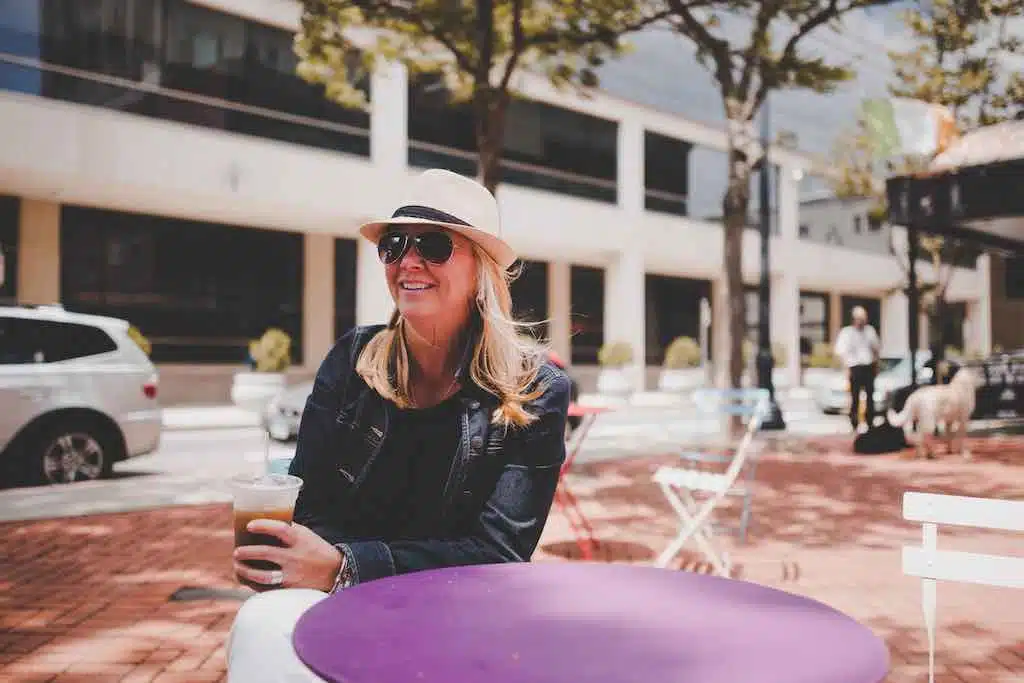
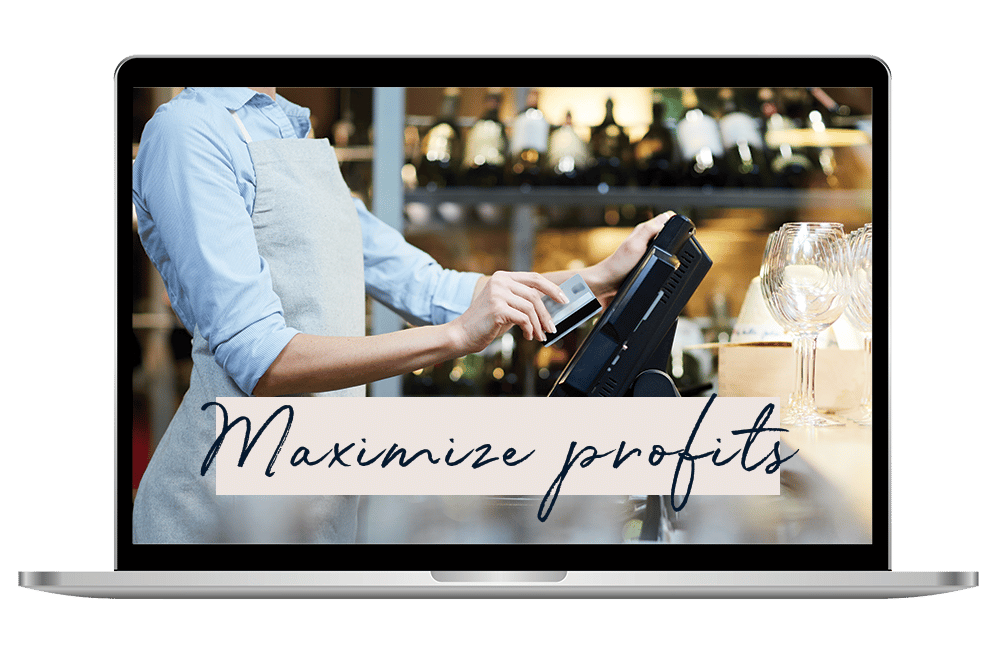
The three costly mistakes you could unknowingly be making?
Find out in this FREE guide and restaurant assessment specifically designed to reveal the unexpected hurdles standing between you and exponential business growth.
Thank You To Our Sponsors
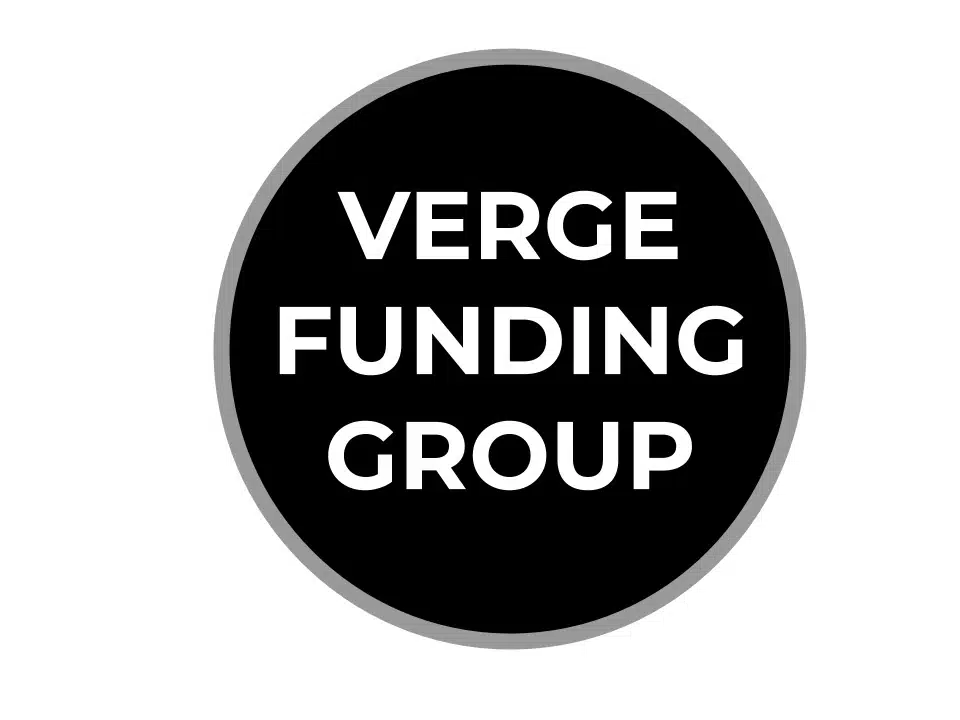
Find Out How Much Your Business Is Due Back from the ERC Program
Set Up a Call with Karen the Owner of Verge Funding
For a limited time only, popmenu is offering our listeners $100 off your first month plus an unchanging lifetime rate.
Request a DEMO:
Want to become a podcast sponsor?
Please get in touch with Roger at roger@restaurantrockstars.com
